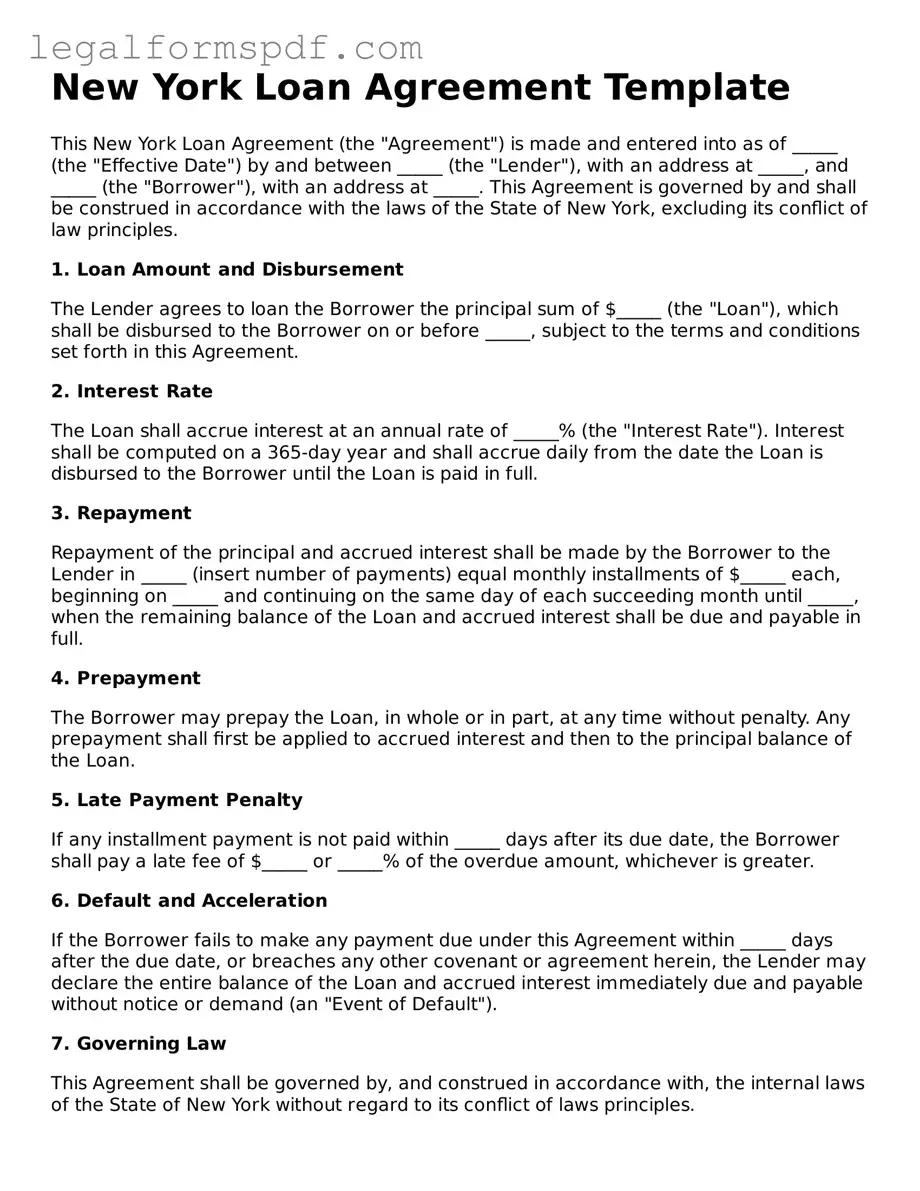New York Loan Agreement Template
This New York Loan Agreement (the "Agreement") is made and entered into as of _____ (the "Effective Date") by and between _____ (the "Lender"), with an address at _____, and _____ (the "Borrower"), with an address at _____. This Agreement is governed by and shall be construed in accordance with the laws of the State of New York, excluding its conflict of law principles.
1. Loan Amount and Disbursement
The Lender agrees to loan the Borrower the principal sum of $_____ (the "Loan"), which shall be disbursed to the Borrower on or before _____, subject to the terms and conditions set forth in this Agreement.
2. Interest Rate
The Loan shall accrue interest at an annual rate of _____% (the "Interest Rate"). Interest shall be computed on a 365-day year and shall accrue daily from the date the Loan is disbursed to the Borrower until the Loan is paid in full.
3. Repayment
Repayment of the principal and accrued interest shall be made by the Borrower to the Lender in _____ (insert number of payments) equal monthly installments of $_____ each, beginning on _____ and continuing on the same day of each succeeding month until _____, when the remaining balance of the Loan and accrued interest shall be due and payable in full.
4. Prepayment
The Borrower may prepay the Loan, in whole or in part, at any time without penalty. Any prepayment shall first be applied to accrued interest and then to the principal balance of the Loan.
5. Late Payment Penalty
If any installment payment is not paid within _____ days after its due date, the Borrower shall pay a late fee of $_____ or _____% of the overdue amount, whichever is greater.
6. Default and Acceleration
If the Borrower fails to make any payment due under this Agreement within _____ days after the due date, or breaches any other covenant or agreement herein, the Lender may declare the entire balance of the Loan and accrued interest immediately due and payable without notice or demand (an "Event of Default").
7. Governing Law
This Agreement shall be governed by, and construed in accordance with, the internal laws of the State of New York without regard to its conflict of laws principles.
8. Amendments
This Agreement may only be amended, modified, or supplemented by an agreement in writing signed by each party hereto.
9. Notices
All notices, requests, demands, and other communications hereunder shall be in writing and shall be deemed to have been duly given if delivered personally or sent by registered or certified mail (postage prepaid, return receipt requested) to the parties at the above addresses or at such other address as either party may specify in writing.
10. Entire Agreement
This Agreement contains the entire understanding between the parties with respect to the subject matter hereof and supersedes all prior and contemporaneous agreements and understandings, oral or written, relating to such subject matter.
IN WITNESS WHEREOF, the parties have executed this Agreement as of the Effective Date.
__________________________________
Lender: _____
__________________________________
Borrower: _____
